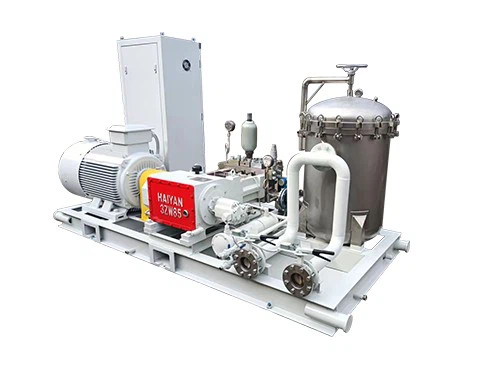Adjustment of installation and operation
1. Lower the installation height: If the installation height of the pump is too high, the installation position of the pump can be moved down, shorten the vertical distance between the pump inlet and the liquid surface, increase the pressure at the pump inlet, make it higher than the vaporization pressure of the liquid, and thus reduce the occurrence of cavitation.
2. Optimize the suction pipeline: Check the suction pipeline and replace the thin pipeline to increase the pipe diameter, reduce the liquid flow rate, and reduce the pressure loss. At the same time, clean the impurities and dirt in the pipeline to ensure that the inner wall of the pipeline is smooth and reduce resistance. In addition, check the connection parts of the pipeline to ensure good sealing to prevent air leakage.
3. Control the operating parameters: strictly control the flow rate and speed of the pump to avoid running at high flow and high speed. The pump can be operated near the rated working condition by adjusting the outlet valve opening or using a variable frequency speed control device. At the same time, pay close attention to the liquid temperature. If the temperature is too high, cooling measures can be taken, such as adding cooling water pipelines or cooling the fire water pool.
Maintenance and parts replacement
1. Inspection and cleaning: Open the pump casing regularly to check the wear of the impeller and pump casing. For pitting, pitting and other damage caused by cavitation, wear-resistant materials can be used for repair. At the same time, clean up the debris, rust and other stains in the impeller and pump casing to ensure smooth flow.
2. Replacement of parts: If the impeller, shaft seal and other parts are seriously damaged by cavitation, new parts should be replaced in time. Choose parts with good quality and strong cavitation resistance, such as impellers made of corrosion-resistant materials such as stainless steel, to improve the pump's cavitation resistance.
Improvement of system design
1. Add a pre-boosting pump: Add a pre-boosting pump in front of the main Fire-fighting Pump to increase the inlet pressure of the liquid and provide sufficient net positive suction pressure head for the main pump, thereby effectively preventing the occurrence of cavitation.
2. Optimize the design of the fire water pool: Rationally design the structure and layout of the fire water pool, increase the depth of the pool, and increase the liquid level to increase the static pressure at the pump inlet. At the same time, ensure that the water inlet and outlet of the pool are arranged reasonably to avoid vortexes in the water flow and prevent air from entering the suction pipe.

